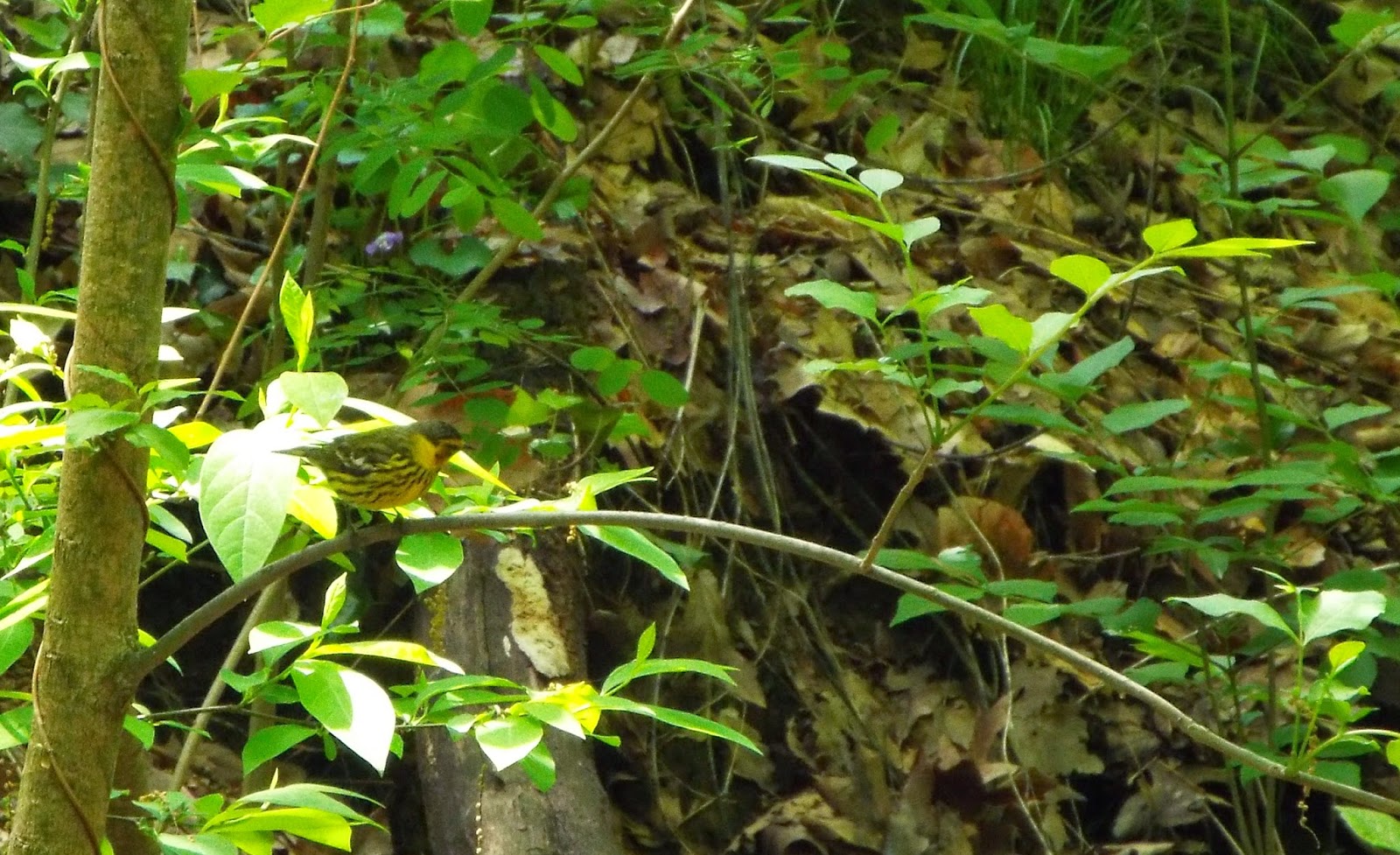
Took advantage of the Spring-ish weather yesterday and went exploring some
VA and MD hotspots. Though the early morning was overcast and chilly, the Great Falls walk still produced nearly 40 species. The highlight, by far, was my sighting of a female Long-tailed Duck swimming near 4 male Common Mergansers. The bird was noticeably larger than nearby Buffleheads and nearly as large as the Common Mergs, and she had a distinct spot/smudge on her cheek.
No one else on the walk saw the bird, and I'm guessing few would believe a Long-tailed could be there. As far as I can tell, there has never been a reported sighting of a Long-tailed Duck at Great Falls, so this is indeed a significant find. (To be clear, I'm not looking for accolades. I'd feel much better if someone more experienced finds the bird later this week to "legitimize" the finding.)
I then made my way over to the Chesapeake Bay Environmental Center (CBEC) for a much-overdo first visit. I'd read that this is the most consistent site for Brown-headed Nuthatches, and sure enough, within 10 minutes of arrival, there they were! These nuthatches were a life bird for me, and I can't imagine having a better look than on this day. The two birds were positively unfazed by my presence and allowed me to watch for a full 20 minutes while they made some "renovations."
The CBEC is also known for the occasional Virginia Rail (a bird I'm just desperate to see) appearance, but no luck on this visit. It's a beautiful place, though, and I'll definitely be going back. Highly recommend you all make a trek there if you haven't already. If nothing else, you can see Tundra Swans, Northern Pintails, American Wigeon, and of course, Brown-headed Nuthatches!
Now on to the rant... after CBEC, I headed over to Dyke Marsh in hopes of finding the Easter Screech Owl(s). When I arrived at 4 pm, there weren't any other birders present, so I set up shop about 75 yards from the appropriate tree cavity. Within 30 minutes or so, a couple of birders arrived, positioning themselves and all their gear on the path as close to the cavity as possible. Then a rather boisterous (I'm being kind here) photographer joined the group, making grand gestures and talking quite loudly. By 5 pm, the group had become large enough that they covered the entire path. There were people with barking dogs, people talking on cell phones, people grandly gesticulating (I'm still being nice here), people rustling through their gear, people eating... you get the point. And I'm not exaggerating the scene.
I finally had enough by 5:30 and went over to request that they kindly relocate farther down the path so that the owl(s) might be more inclined to show up. The grand gesticulator looked at me with disgust and said nothing; others said "good idea" and "thanks" and "will do." I left disappointed in not seeing the owl(s), but I had hope that these folks would at least be moving far enough away that the owl(s) wouldn't feel threatened anymore.
Once back at my car, considering my options for the evening, I figured nothing was more important than trying to catch a glimpse of a possible life bird. So, I pounded a handful of granola and walked back up the trail. What did I find? Not a single member of that group had budged. Sure, some folks had given up and moved on, but most of the "core" remained. In other words, they'd decided not to heed my advice, they'd decided that they "knew better." Now I'm all for independent thought and action, and I get that folks are excited by this bird, but this... this was just gross. They wouldn't (couldn't?) consider the possibility that these birds might want to feel safe before appearing in the cavity. There was simply no respect for the owl(s), not to mention the lack of respect they had for all the Dyke Marsh walkers who were forced to push around/through the group to keep on the path.
Of course, it's possible I'm overreacting. It's possible I'm totally wrong about the birds wanting to feel less threatened. But the fact that these people simply weren't interested in considering an alternative is troubling, at the very least.
For the first time, I was embarrassed to be a birder.
 For my 11th straight day of birding, I arrived at Occoquan early this morning in hopes of hearing or seeing something unusual. I sat at the closed gate for about 40 minutes, just listening to the Prairie Warblers and Yellow-billed Cuckoos marking their territories. Once through the gates, it became clear that the yellow-hued warblers--Prairies, Yellow Warblers, Prothonotary Warblers, Common Yellowthroats, and even a Yellow-breasted Chat--were in the majority.
For my 11th straight day of birding, I arrived at Occoquan early this morning in hopes of hearing or seeing something unusual. I sat at the closed gate for about 40 minutes, just listening to the Prairie Warblers and Yellow-billed Cuckoos marking their territories. Once through the gates, it became clear that the yellow-hued warblers--Prairies, Yellow Warblers, Prothonotary Warblers, Common Yellowthroats, and even a Yellow-breasted Chat--were in the majority.



















